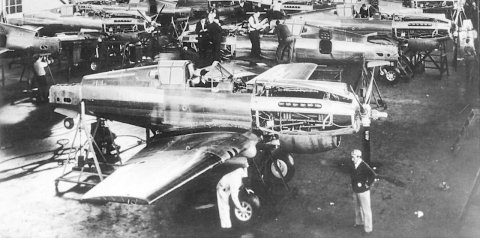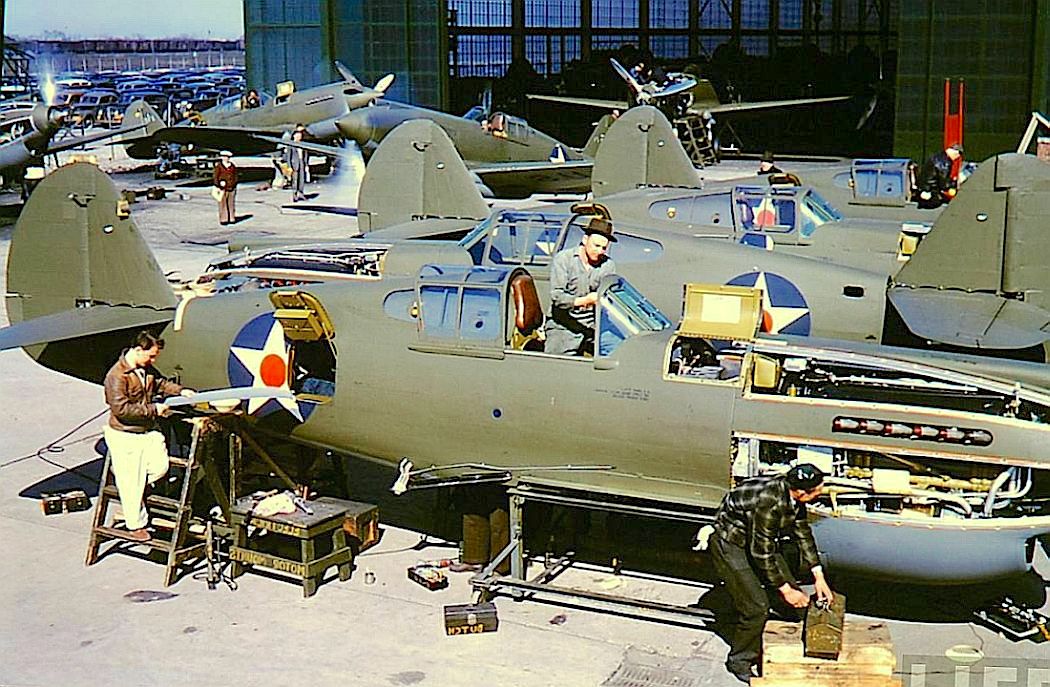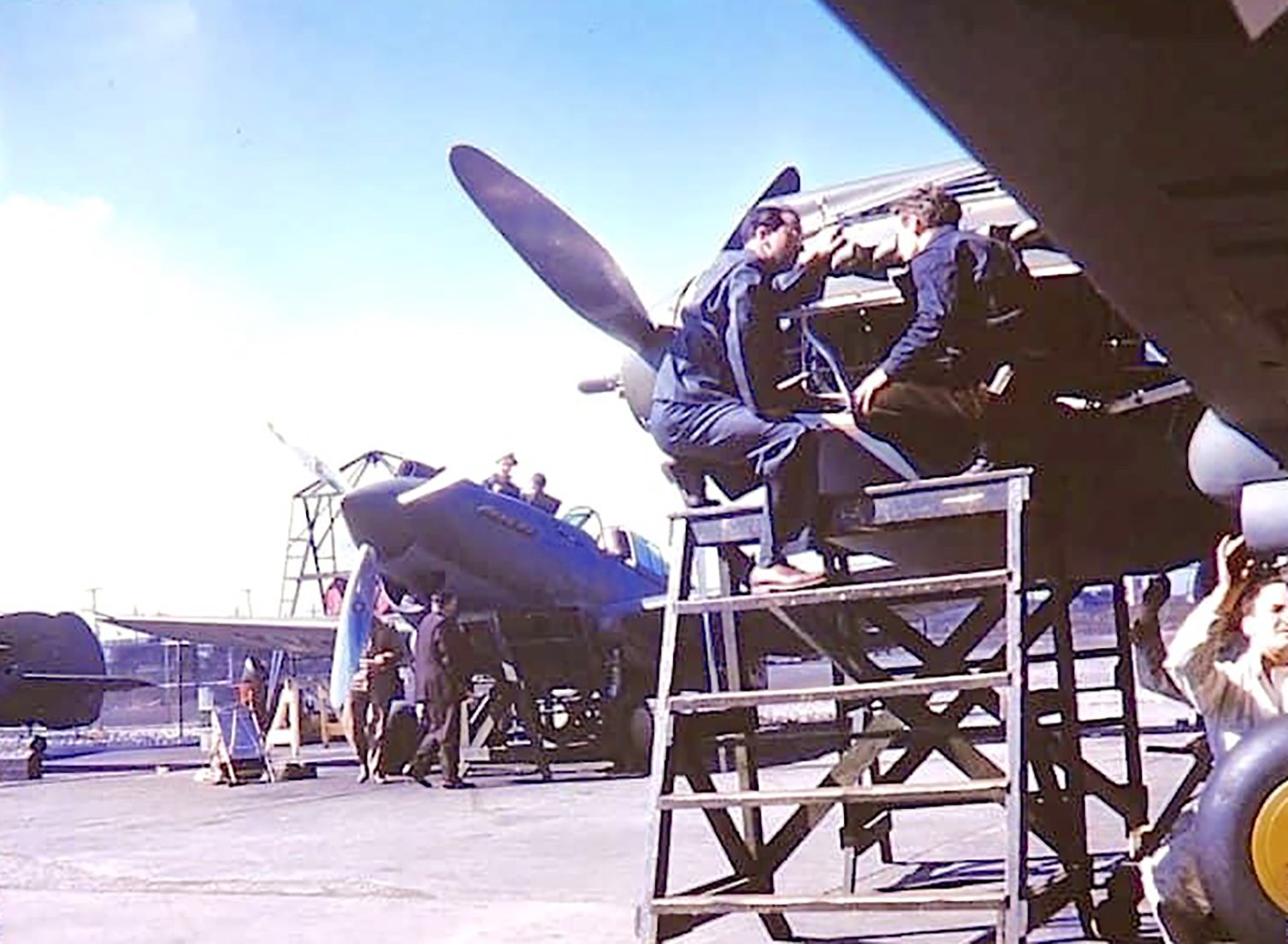
HistorY
Let’s take a step back in time. A development stemming from the Curtis P-38, the first P-40 flight took place at Buffalo New York in 1938. At that time no one could have predicted that over 14,000 aircraft would leave the production line. That they would fly and fight for twenty different nations on every front of WW2. That they would be pivotal in slowing Japanese and German advances, allowing allied forces the time to improve and ramp up defensive arms production.
The iconic Shark Face
The P-40 formed the backbone of the allied first response to the aggression of Germany and Japan. The RAF, RNZAF and RAAF flew them with great success, notably during the North African campaign. The Soviet Union flew P-40s and P-39s to great effect on the Eastern front. The USAAF in the Pacific and Southeast Asia. Initially with Clair Chennault’s American Volunteer Group, (AVG), better known as the Flying Tigers. Later incorporated into the 23rd Fighter group, the Flying tigers P-40’s where the most successful US fighter group in any of the WW2 theatres where the USA was active. The Dutch 120th squadron, (Initially operating under RAAF command), was active in the battles in SE Asia. German Ace Hans, Joachim Marseille, advised new pilots joining units in North Africa, to never take a P-40 head on! The tremendously effective cannon would tear a bf-109 to shreds.
Unique and rarely seen Aircraft
Arguably, the legendary P-40 played the greatest role of any fighter during WW2.
Yet it is a rare participant at Airshows and during memorial services etc.


Why is this?
The P-40 was less visible in the locations of European Theatres where news and press coverage were the most intense. Due to necessity, air to ground support was ramped up with the P-40s operating from bases very close to front line operations, and not in the public eye as they would have been from secured locations in the UK, France etc. The specifications of the Allison engine, determined by the US military, precluded multiple superchargers which limited the P-40s fighting ability at higher altitudes. The need for large numbers of aircraft at the beginning of WW2 restricted the time for the development of a more efficient wing profile for the P-40’s.
When playing to its strengths the P-40 was still very effective in aerial combat, notably employing high speed dive tactics developed by Chennault and the AVG. It delivered on all fronts when it came to ground support and interdiction mission profiles where the wing design was an advantage, particularly the roll capability, making it a very agile and manoeuvrable machine. It was also popular with pilots because it was rugged, strong, dependable, and even when badly damaged it brought many pilots safely home.
Due to the start of the cold war, the impressive list of successes flying the P-40 by Soviet forces on the Eastern front where largely sweep under that carpet. Thus, while Spitfires and P-51s are restored in numbers, the true unsung hero of WW2, the P-40, never received the credit and attention it deserves.
We intend to change that.
The P-40 Kittyhawk in Dutch military service
The Curtis P-40E and N variants were flown by Dutch military forces from 1942 until 1949 fulfilling a wide range of roles, such as fighter sweep, escort duties, interdiction, close air support, recognisance and antishipping operations.
Too late
In February 1942, the 17th Pursuit Squadron of the US Army Airforce was stationed at Ngoro airfield in East Java. On the 22nd of the same month two ships, The Langley and the Seawitch, left Perth in Western Australia with P-40Es on board. The aircraft were destined for the RAF and the ML-KNIL (The Military aviation arm of the Royal Dutch East Indian Army). The Langley was sunk after two consecutive attacks by Japanese bombers, but the Sea Witch was able to make port and unload its cargo of aircraft. The aircraft when then divided into two consignments and railroaded to their airfields for assembly. The engineers worked day and night to get the aircraft ready for operations. On the 7th of March, one day prior to the capitulation, the first Dutch P-40 was test flown. Efforts to slow the Japanese advance were insufficient to have all the aircraft airworthy in time. This resulted in the airworthy aircraft being flown out of Java to Australia whilst the remaining aircraft were ordered to be destroyed.

Recognisance and support missions
The requirement to train Dutch pilots for the P-40 was met by the establishment of the Royal Netherlands Military Flying School (RNMFS), in Jackson, Mississippi. Not apparent in the naming of the school it was exclusive to pilots of the ML-KNIL. In total 55 pilots were trained there of which the majority were posted to Australia. After completion of the operational conversion course, the ML-KNIL 120th Squadron was born. Establishing of the 120th Sqd made operational integration into the Royal Australian Air Force (RAAF) possible. The Squadron’s pilots and ground personnel operated from New Guinea and were mainly tasked with recognisance, fighter patrols, ground support and anti-shipping duties. 20 P40-Ns were initially made available for these operations.
First operational missions
The first operational missions by the ML-KNIL with the Curtis P-40 were flown in 1944. The conditions were rough and arduous, for both man and machine. At the time of the Japanese surrender there were 34 operational Dutch P-40s in theatre. After the war they were used during the Dutch positional actions until 1949. The purchase of newer aircraft and the extreme wear and tear had taken their toll, leading shortly afterwards to their decommissioning.
Our Aircraft
Our aircraft is currently being restored in New Zealand. The airframe does not have a history of flying with the ML-KNIL or of one with the Netherlands East Indies Air Force (NEIAF). It was, however, flown extremely effectively by the Soviet Union on the Eastern front in a swing role as a fighter and a ground attack platform. Together with a few other airframes, it was expertly recovered from the forests of Murmansk in the 1990’s and shipped to New Zealand. A 20 year long process of inventorying, finding, and purchasing parts established a very complete project.
In February 2020 an initial appraisal was carried out in New Zealand which, a few months later, lead to the formation of the Dutch Warbird Foundation and the purchase of the P-40E project named: White 25. The first momentous step to realising our collective ambition was a fact.
Why the designation White 25?
The aircraft number, 25, was written in large white lettering on the fuselage whilst in service with the USSR.

interesting tidbits
Curtiss P-40
A total of 13,738 aircraft of the P-40 were produced until November 1944 in the Curtiss factory in Buffalo, New York.
Did you know that today there are about 20 P-40s in different versions airworthy?
In addition, there are still about 80 copies in museums around the world and a number of these are awaiting restoration.
Supemarine Spitfire
If you compare this with the Supermarine Spitfire, there are still 199 Spitfires in the world.
76 of these are airworthy, 65 are in museums and 58 are in storage or being restored.
P-51 Mustang
About 15,000 of the P-51 Mustang were produced, of which more than 8,000 were the famous D-version.
Today there are still 150 P-51 Mustang that are airworthy, in museums or are being restored.









